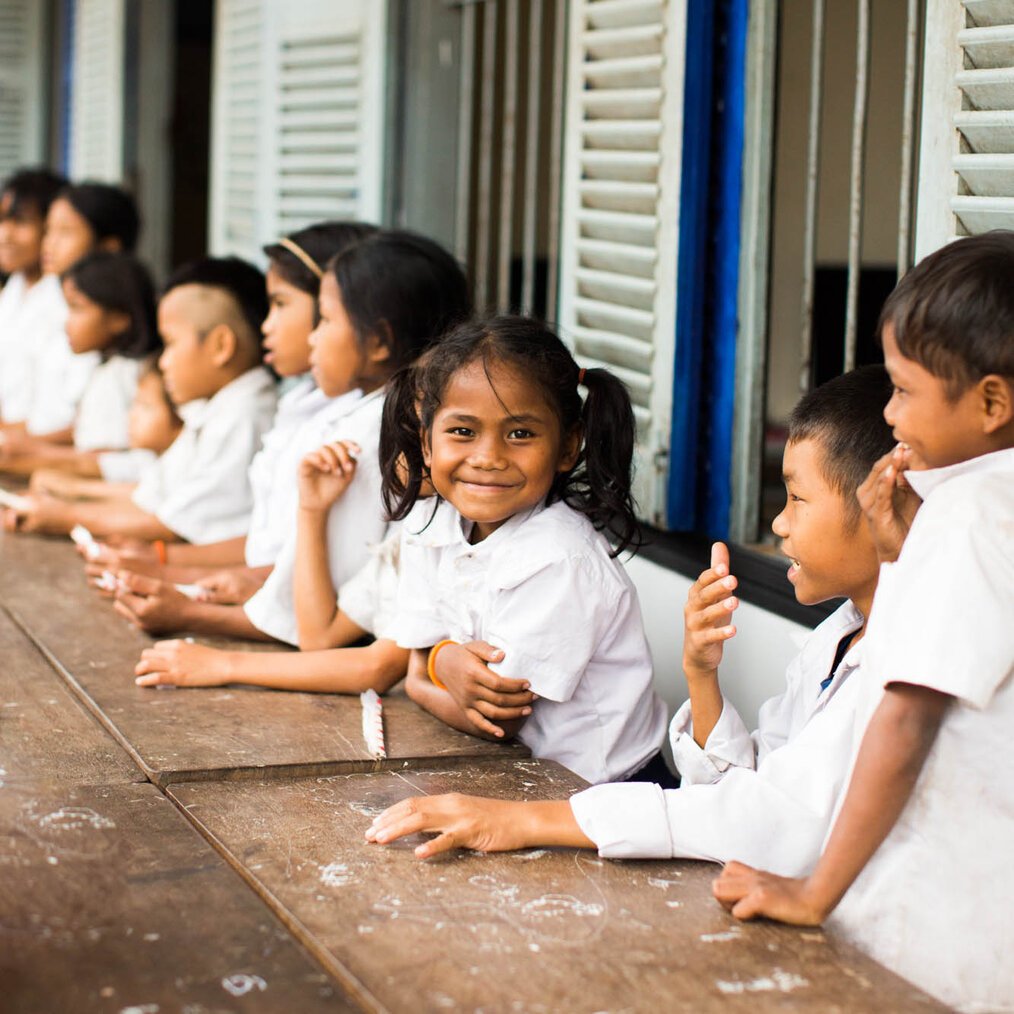A wild, overgrown must-see stop on a visit to Angkor Wat.
The jungle has reclaimed parts of Ta Prohm temple, which makes it a fun one to explore
The sacred temple of Ta Phrom caught the attention of location scouts and served as the setting for an epic scene in the cinematic adaptation of Lara Croft: Tomb Raider.
Since its debut on the big screen in the summer of 2001, Ta Phrom is now commonly referred to as the Tomb Raider Temple. The sprawling and atmospheric ruins are located about two miles northeast of the Angkor Wat Archeological Park in Cambodia.
“The strangler figs’ sinuous, gnarled roots spread out and over the temple walls like the tentacles of a kraken.”
Like an episode of the television series Life After People, the jungle didn’t waste time in reclaiming the structure after it was abandoned in the 15th century. The towering strangler fig trees that have become an iconic and integral part of the ruins share a symbiotic relationship with the structure — their sinuous, gnarled roots spread out and over its walls like the tentacles of a kraken.
An obligatory photo of our group taken underneath the roots of the towering strangler fig tree in the inner courtyard at Ta Phrom, where Angelina Jolie’s Lara Croft picked a jasmine flower before falling into the catacombs of the temple
It’s easy to see why this temple was featured as one of the settings in the action-adventure film Tomb Raider — in which actress Angelina Jolie portrayed the popular video game heroine Lara Croft, battling the secret society of the Illuminati to recover powerful ancient artifacts. Incidentally, we picked up a copy of the DVD at the Angkor Night Market and watched it when we returned from our trip. Not the best movie, in my humble opinion, but it was fun to see Ta Phrom get the Hollywood treatment, and Jolie appeared to enjoy herself.
As an interesting aside, our guide Kimsan told us that Jolie was one of the last Americans to legally adopt a child from Cambodia. Her son Maddox was born in the northwest province of Battambang and was 7 months old at the time. Kimsan explained that Cambodia was suffering from the illegal opportunistic trafficking and exploitation of children. As a result, the Cambodian government has put a ban on expatriate adoptions, grappling with the complicated issues of its overrun, unregistered and unregulated orphanages.
The western entrance pavilion contains a towering gate, with four large serene faces overlooking the cardinal directions
A Mother of a Memorial
Ta Phrom was built as a monastery by King Jayavarman VII in the Bayon style during a time when Mahayana Buddhism was the state religion. As Jayavarman saw himself as the devaraja, a mortal god-king, it’s only fitting that the temple’s primary deity, the Bodhisattva Prajnaparamita (the Perfection of Transcendent Wisdom), was fashioned in the likeness of his mother.
Walking onto the jungle path, Ta Phrom left me with a childlike sense of wonder. Unlike the majority of Angkor’s restored temples, it has been left largely as it was found. Partially cleared of jungle vegetation, it wasn’t difficult to imagine how French botanist Henri Mahout felt when he rediscovered these ruins in 1860. An excerpt from his posthumously published journal breathlessly noted:
“There are … ruins of such grandeur … that, at the first view, one is filled with profound admiration, and cannot but ask what has become of this powerful race, so civilized, so enlightened, the authors of these gigantic works?”
Half-hidden, intricately carved reliefs lie strewn about the site like jigsaw puzzle piece
Here before us lay the low expansive enclosures of Ta Phrom, with fig, banyan and kapok trees spreading their roots amongst the lichen-covered sandstone pillars that lined the passageways. An otherworldly mist hung about the ruins, even though it was quite humid — or perhaps that was just how I remember it.
Laterite and sandstone were used in the construction of Ta Phrom. Quarried locally in the Kulen Mountains, sandstone worked well for the extensive carvings that adorned the walls. The temple includes a prasat, a square sanctuary tower with a chamber, over which a multitiered tower rises. Four doorways open into the chamber, which once housed the sacred idol.
Undeniably spectacular, the jungle setting of Ta Phrom is easy to explore and has all of its galleries at ground level. –Duke





























